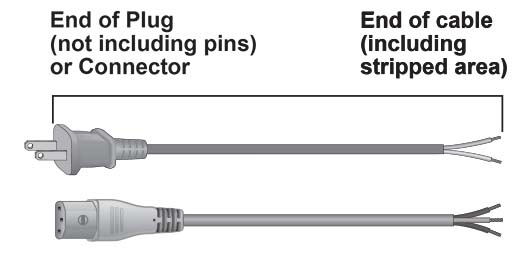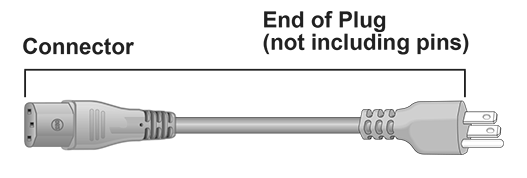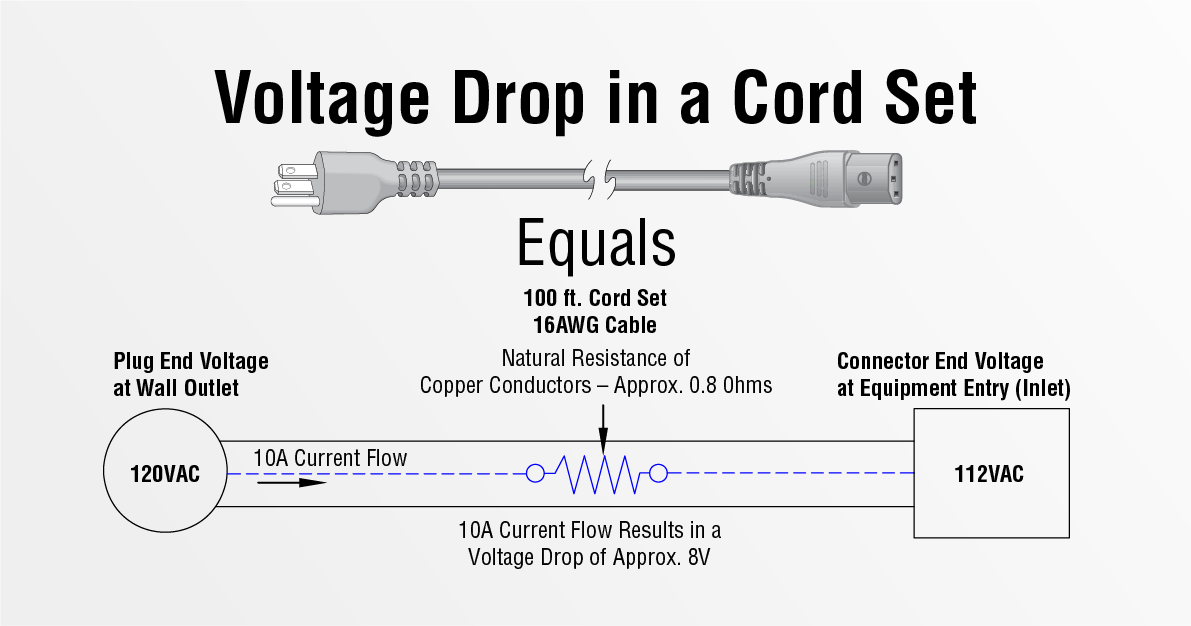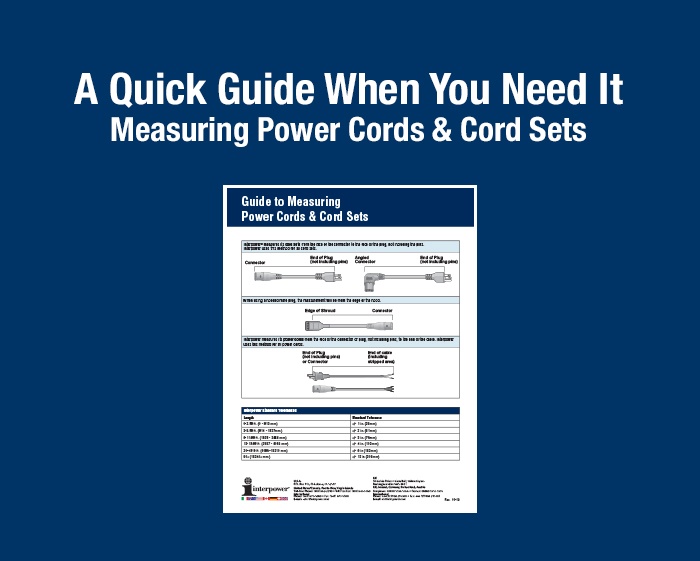Interpower offers standard cord lengths and specialized lengths as part of its value-added services for unique electrical designs.
Measuring a Power Cord
Interpower measures a power cord from the face of the connector or plug, not including the pins, to the end of the cable. Interpower uses this method for all power cords.

Measuring a Cord Set

When using a shrouded male plug, the measurement starts from the edge of the shroud to the face of the connector.

Standard and Specialized Lengths
When manufacturing standard or specialized power cords and cord set lengths, Interpower follows North American and international standards, along with minimum and maximum lengths per country regulations and standards. There are application limits that may apply. For example, cords over 50 feet in the United States and Canada will have the amperage rating derated. For international applications, one must be aware of issues such as voltage drop, leakage current, and heat buildup.
The standard tolerances for overall length of cord that Interpower follows include:
| Length |
Standard Tolerance |
| 0–2.99 ft. (0–913mm) |
+/- 1 in. (25mm) |
| 3–5.99 ft. (914–1827mm) |
+/- 2 in. (51mm) |
| 6–11.99 ft. (1828–3656mm) |
+/- 3 in. (76mm) |
| 12–19.99 ft. (3657–6095mm) |
+/- 4 in (102mm) |
| 20–49.9 ft. (6096–15210 mm) |
+/- 6 in (152mm) |
| 50+ (15240+ mm) |
+/- 12 in (305mm) |
Longer Cords, a Cautionary Tale
Longer cords tend to have antennalike qualities by attracting the wavelengths of certain signals. This Electromagnetic or Radio Frequency Interference (EMI/RFI) can be troublesome in applications where EMI must be measured in microamps vs. milliamps for safety purposes, which is often the case in sensitive medical applications use.

“In regard to medical equipment,” said Dan Ford, Interpower Technical Support Specialist, “when you go beyond the 12- to 15-feet length for medical cords, it becomes more difficult to meet the standard requirements for resistance and leakage current for the entire electrical design. You don’t want high levels of EMI/RFI in equipment attached to the patient. Currently there is no UL standard for Hospital Grade cord length,” Ford said, “which is likely due to there being hundreds of standards covering a host of medical equipment with differing requirements.”
Still, cutting back on the length of the cord connected to the power main may not solve your EMI issues. Let’s say you add an EMI/RFI filter, a layer of redundancy to lower your interference. You should be good to go, right? Maybe. Ford encourages “cord calculation” for every electrical design.
“If you plug your main power cord into an Accessory Power System (APS), then plug additional accessory cords into peripheral equipment, you must calculate total cord length (not just the main power cord) to get total resistance and leakage current,” Ford said. That is, a 50-foot cord, plus 4 ten-foot cords into the same system would calculate to 90 feet of resistance and current leakage. This may effect equipment performance, or take you beyond the limits of the specific standards you are complying with.”
